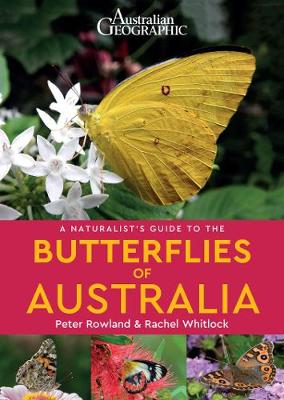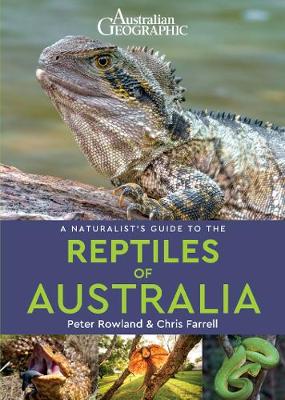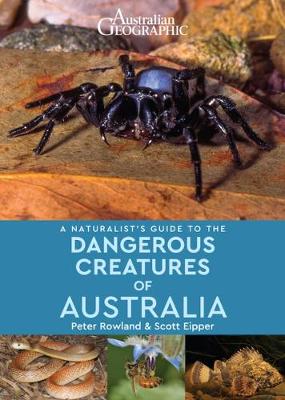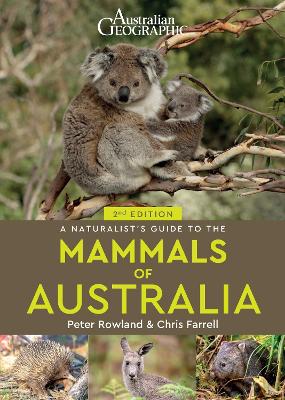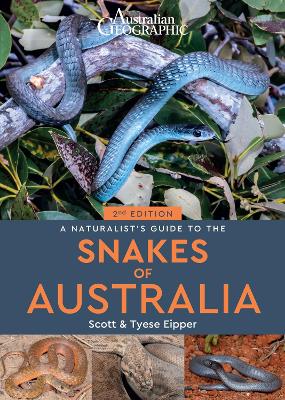Naturalist's Guide
7 total works
A Naturalist's Guide to the Butterflies of Australia
by Peter Rowland and Rachel Whitlock
Published 29 October 2020
This easy-to-use identification guide to the 280 species of butterfly most commonly seen in Australia is perfect for resident and visitor alike.
High-quality photographs from Australia's top nature photographers are accompanied by detailed species descriptions, which include nomenclature, size, distribution, habitat and habits. The user-friendly introduction covers the rise of butterflies, pest and pollinators and the life cycle of butterflies. Also included is a checklist of the butterflies of Australia encompassing, for each species, its common and scientific names and is IUCN status.
High-quality photographs from Australia's top nature photographers are accompanied by detailed species descriptions, which include nomenclature, size, distribution, habitat and habits. The user-friendly introduction covers the rise of butterflies, pest and pollinators and the life cycle of butterflies. Also included is a checklist of the butterflies of Australia encompassing, for each species, its common and scientific names and is IUCN status.
A Naturalist's Guide to the Reptiles of Australia (2nd edition)
by Peter Rowland and Chris Farrell
Published 28 May 2020
This easy-to-use identification guide to the 280 reptile species most commonly seen in Australia is perfect for resident and visitor alike.
High quality photographs from Australia's top nature photographers are accompanied by detailed species descriptions, which include nomenclature, size, distribution, habits and habitat. The user-friendly introduction covers the threats to reptiles, types of habitat, anatomy of reptiles, and details of orders and families. Also included is an all-important checklist of all of the reptiles of Australia encompassing, for each species, its common and scientific name, and its global IUCN status.
High quality photographs from Australia's top nature photographers are accompanied by detailed species descriptions, which include nomenclature, size, distribution, habits and habitat. The user-friendly introduction covers the threats to reptiles, types of habitat, anatomy of reptiles, and details of orders and families. Also included is an all-important checklist of all of the reptiles of Australia encompassing, for each species, its common and scientific name, and its global IUCN status.
A Naturalist's Guide to Dangerous Creatures of Australia
by Peter Rowland and Scott Eipper
Published 30 August 2018
Written by experts with extensive local knowledge, each volume features 100 -280 species that the amateur naturalist might expect to see in the field, with high quality photographs accompanied by detailed species descriptions that include common name, scientific name, size, distribution, habits and habitat. Also included is an all-important checklist of all of the species of the region encompassing for each one its common and scientific name, and IUCN status.
A Naturalist's Guide to the Insects of Australia
by Peter Rowland and Rachel Whitlock
Published 29 August 2019
This easy-to-use identification guide to the 292 species of insect most commonly seen in Australia is perfect for resident and visitor alike.
High quality photographs from Australia's top nature photographers are accompanied by detailed species descriptions, which include nomenclature, size, distribution, habitat and habits. The user-friendly introduction covers modern Australian insects, non-insect hexapods and life cycles. Also included is a checklist of the insect families of Australia listing the number of genera, species and subspecies in each family.
High quality photographs from Australia's top nature photographers are accompanied by detailed species descriptions, which include nomenclature, size, distribution, habitat and habits. The user-friendly introduction covers modern Australian insects, non-insect hexapods and life cycles. Also included is a checklist of the insect families of Australia listing the number of genera, species and subspecies in each family.
A Naturalist's Guide to the Snakes of Australia
by Scott Eipper and Tyrese Eipper
Published 28 October 2019
This photographic identification guide to all of Australia's 236 snake species and subspecies is perfect for resident and visitor alike. It's the first book to show every species and subspecies of Australian snake, and the first new book on Australian snakes to be published for 27 years.
High quality photographs from Australia's top nature photographers are accompanied by detailed species descriptions, which include nomenclature, size, distribution, habits and habitat. The user-friendly introduction covers the geography and climate of Australia, types of habitat, and details of orders and families. Also included is an all-important checklist of all of the snakes of Australia encompassing, for each species, its common and scientific name, and its global IUCN status as at 2018.
High quality photographs from Australia's top nature photographers are accompanied by detailed species descriptions, which include nomenclature, size, distribution, habits and habitat. The user-friendly introduction covers the geography and climate of Australia, types of habitat, and details of orders and families. Also included is an all-important checklist of all of the snakes of Australia encompassing, for each species, its common and scientific name, and its global IUCN status as at 2018.
A Naturalist's Guide to the Mammals of Australia (2nd ed)
by Peter Rowland and Chris Farrell
Published 27 January 2022
This fully updated second edition of A Naturalist's Guide to the Mammals of Australia is an introductory identification guide to the 300 mammal species most commonly seen in Australia, perfect for resident and visitor alike.
High quality photographs from Australia's top nature photographers are accompanied by detailed species descriptions, which include nomenclature, size, distribution, habits and habitat. The user-friendly introduction covers the geography and climate of Australia, types of habitat, and details of orders and families. Also included is an all-important checklist of all of the mammals of Australia encompassing, for each species, its common and scientific name, and its global IUCN status as at 2015
High quality photographs from Australia's top nature photographers are accompanied by detailed species descriptions, which include nomenclature, size, distribution, habits and habitat. The user-friendly introduction covers the geography and climate of Australia, types of habitat, and details of orders and families. Also included is an all-important checklist of all of the mammals of Australia encompassing, for each species, its common and scientific name, and its global IUCN status as at 2015
A Naturalist's Guide to the Snakes of Australia (2nd ed)
by Scott Eipper and Tyese Eipper
Published 30 June 2022
The fully revised 2nd edition of this easy-to-use identification guide to all of Australia’s 239 snake species and subspecies includes 6 new species, updated accounts for 20 species and around 30 new photographs.
The high quality photographs from Australia’s top nature photographers are accompanied by detailed species descriptions, which include nomenclature, size, distribution, habits and habitat. The user-friendly introduction covers the geography and climate of Australia, types of habitat, and details of orders and families. Also included is an all-important checklist of all of the snakes of Australia encompassing, for each species, its common and scientific name, and its global IUCN status as at 2018.
The high quality photographs from Australia’s top nature photographers are accompanied by detailed species descriptions, which include nomenclature, size, distribution, habits and habitat. The user-friendly introduction covers the geography and climate of Australia, types of habitat, and details of orders and families. Also included is an all-important checklist of all of the snakes of Australia encompassing, for each species, its common and scientific name, and its global IUCN status as at 2018.
